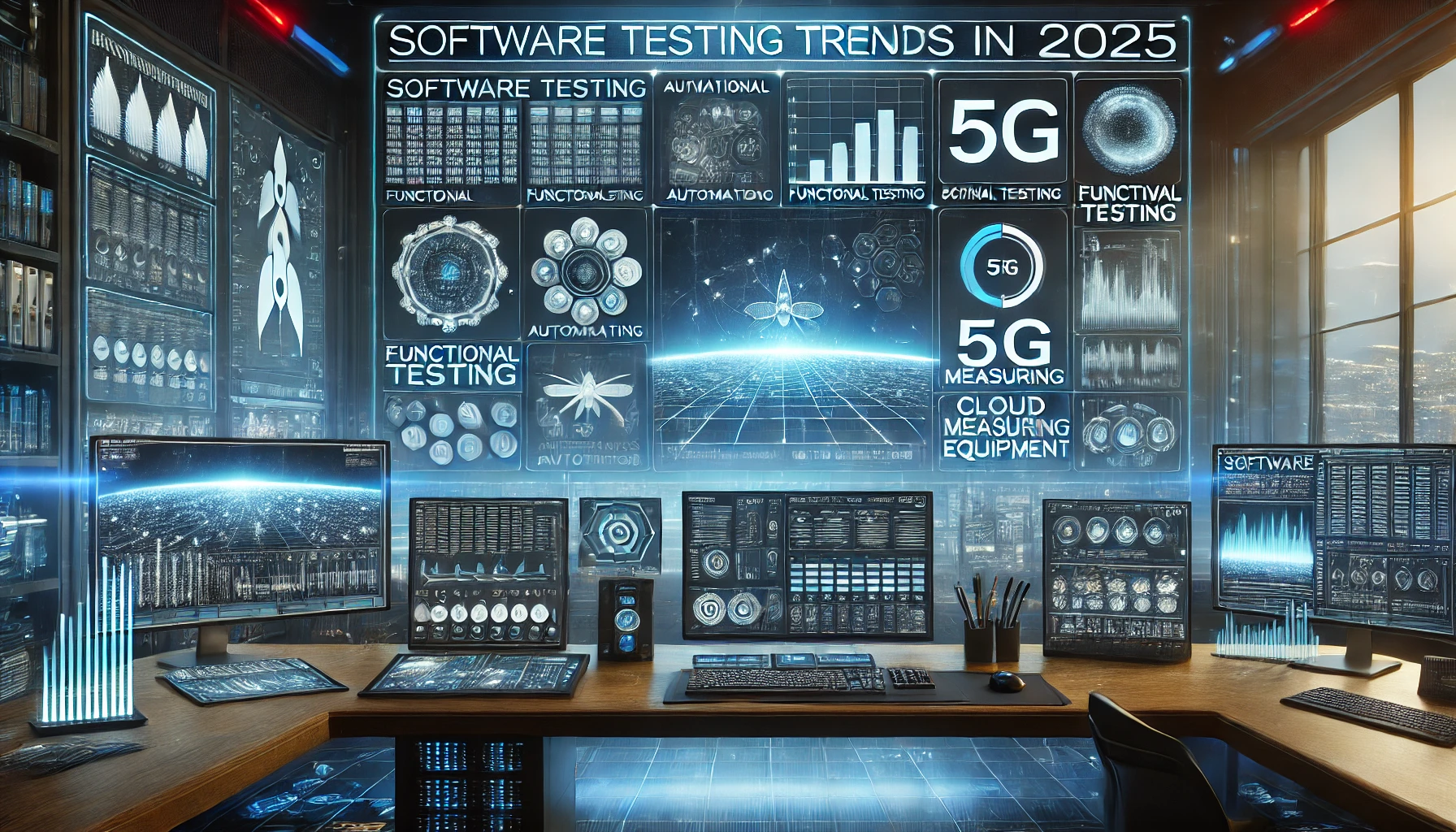
The landscape of software testing is evolving rapidly as businesses strive to improve product quality and accelerate time-to-market. In 2025, several transformative trends are shaping the industry, ensuring software reliability, security, and performance. From AI-driven automation to the rise of 5G testing, staying ahead of these trends is crucial for organizations aiming to maintain a competitive edge.
1. The Rise of AI and Machine Learning in Software Testing
Artificial Intelligence (AI) and Machine Learning (ML) are playing an increasingly significant role in software testing. These technologies enhance test automation by analyzing patterns, predicting defects, and generating test cases more efficiently than traditional methods. AI-powered functional testing services are becoming more sophisticated, allowing testers to identify potential vulnerabilities faster and with higher accuracy.
Automated test scripts driven by AI can self-heal when code changes occur, reducing the need for manual intervention. This trend is particularly beneficial in Agile and DevOps environments, where continuous integration and deployment require constant validation.
2. Shift-Left Testing: Detecting Bugs Earlier
Shift-left testing is a proactive approach that emphasizes early testing in the software development lifecycle. By integrating testing into the development phase, companies can detect and fix defects before they escalate, saving time and resources.
This trend is gaining traction with the rise of test automation tools and cloud-based environments, which facilitate early-stage testing. Functional testing services are an integral part of shift-left testing, ensuring that software meets requirements before progressing to later stages of development.
3. The Adoption of Continuous Testing in DevOps
Continuous testing is no longer optional in a DevOps-driven world. As organizations embrace faster release cycles, testing needs to keep pace. Continuous testing integrates automated testing into every stage of the software development pipeline, ensuring that updates do not introduce new defects.
By leveraging AI-driven test automation and cloud-based testing environments, companies can execute thousands of test cases in parallel, improving efficiency and reliability. Functional testing services play a crucial role in validating user functionality at each deployment stage, reducing the risk of failures in production.
4. 5G and IoT Testing: Ensuring Seamless Connectivity
With the expansion of 5G networks and the proliferation of IoT devices, software testing must evolve to address new challenges. Testing in a 5G measuring equipment environment ensures that applications are optimized for high-speed, low-latency connectivity.
Additionally, IoT testing requires evaluating the interoperability, security, and scalability of connected devices. Performance testing in an antenna testing chamber allows engineers to assess signal strength and interference, ensuring that IoT devices function reliably in real-world conditions.
5. Cloud-Based and Remote Testing Solutions
Cloud-based testing solutions are gaining widespread adoption due to their scalability and flexibility. Testers can access virtual environments to execute test cases without the need for on-premise infrastructure. This trend is particularly valuable for remote teams and enterprises adopting a hybrid work model.
Cloud testing platforms enable seamless collaboration between development and testing teams, allowing real-time defect tracking and instant feedback. Moreover, cloud-based environments support the integration of functional testing services, enabling organizations to validate applications across multiple operating systems and devices efficiently.
6. Security Testing: Strengthening Cybersecurity Measures
As cyber threats continue to rise, security testing has become a top priority for businesses. Security breaches can lead to severe financial and reputational damage, making it essential to identify vulnerabilities before attackers exploit them.
Automated penetration testing, ethical hacking, and AI-driven security assessments are increasingly being integrated into software development workflows. Functional testing services also incorporate security validation to ensure applications meet compliance standards and safeguard user data.
7. The Role of Blockchain in Software Testing
Blockchain technology is gaining traction beyond cryptocurrency, impacting industries such as finance, healthcare, and supply chain management. With the adoption of blockchain-based applications, the need for specialized testing frameworks is growing.
Testing blockchain applications requires validating smart contracts, ensuring data integrity, and verifying network security. Companies are investing in blockchain testing solutions to ensure transparency and reliability in decentralized ecosystems.
8. The Evolution of Test Automation Tools
Test automation tools continue to evolve, offering advanced features such as AI-driven test case generation, scriptless automation, and real-time analytics. Organizations are shifting from traditional automation frameworks to more intelligent solutions that require minimal coding expertise.
Popular automation tools are now integrating functional testing services, making it easier for testers to execute comprehensive test suites without manual intervention. This evolution is driving greater efficiency, reducing costs, and improving overall software quality.
Conclusion
As software development accelerates, testing methodologies must evolve to keep up with the demands of speed, security, and performance. The rise of AI, continuous testing, cloud-based solutions, and 5G measuring equipment is transforming how businesses approach quality assurance.
For companies like Orbis Systems, staying at the forefront of these trends is essential to delivering cutting-edge testing solutions. Whether it’s functional testing services, security validation, or testing in an antenna testing chamber, adopting these emerging practices will ensure software reliability in an ever-changing digital landscape.